Back with another figure from the Replica Fish Toys 6″ line, this time the longnose gar Lepisosteus osseus. Not as well known as its relative the alligator gar (and certainly not as common in figure form) this is nevertheless another distinctive, prehistoric fish from the waters of eastern North America, from southern Quebec to the Rio Grande drainage in Mexico and Texas. They inhabit a range of habitats, including backwaters, streams, swamps, and even brackish waters in coastal areas. As with all gars, longnose gars are notable for their armoured ganoid scales, their ability to breathe air at the surface, and long, croc-like body. In the case of the longnose gar they have taken ‘long’ to a relative extreme, with jaws that are as much as three times the length of the head. Unlike alligator gars (and other Atractosteus species), the jaws of longnose gars are quite narrow – think the difference between an alligator and a gharial.
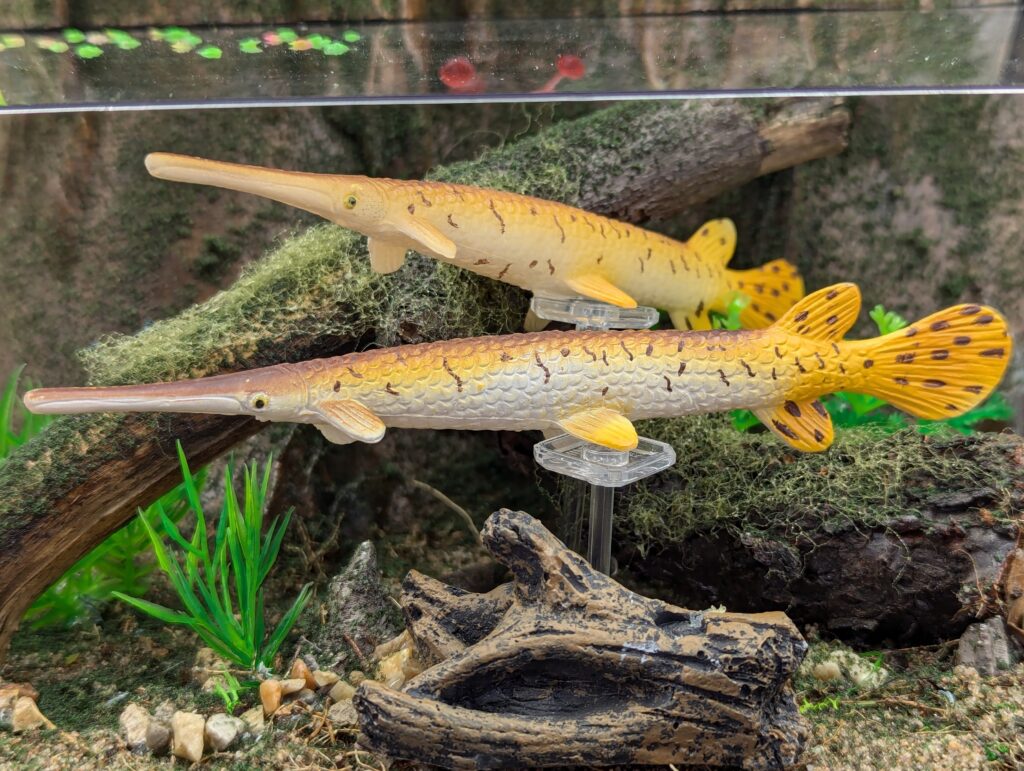
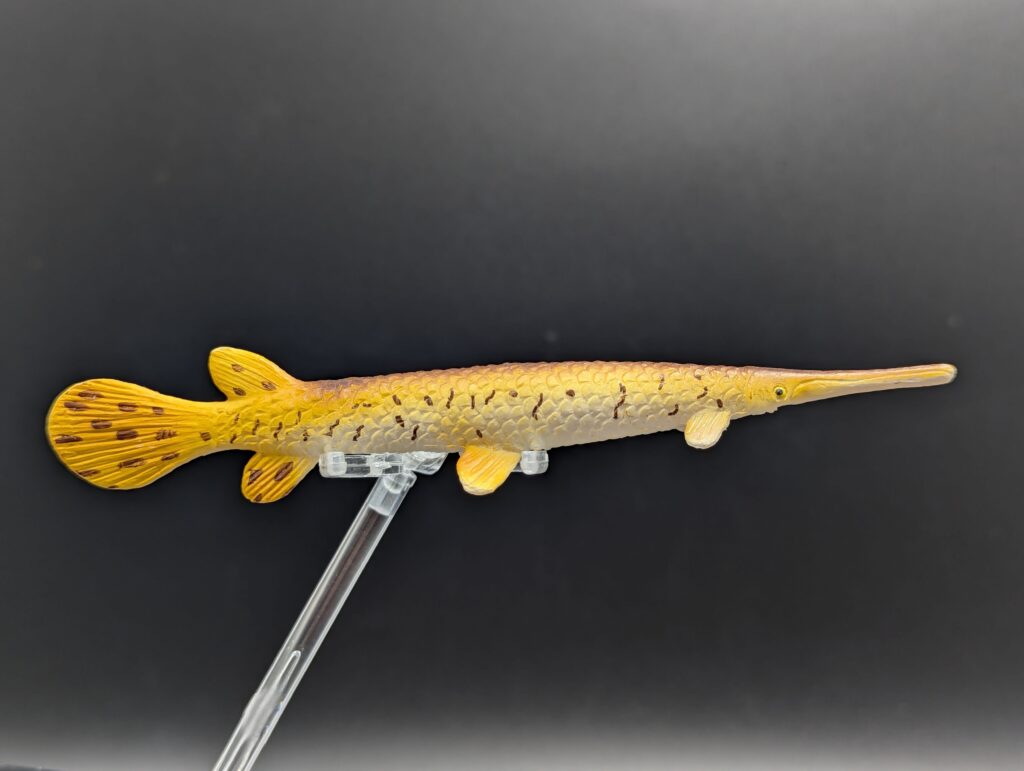
As would be expected, longnose gars use these long jaws–full of sharp, pointed teeth–to grab prey, primarily fish, but also invertebrates, via ambush hunting, primarily at night. This makes them attractive to some anglers, as they put up quite the fight–but hooking them (like most gars) may be an added challenge, as their mouths are pretty much tooth and bone, and they can shake hooks easily. Longnose gar are listed as Least Concern by the IUCN and may in some areas be quite abundant. Of course in some areas they are negatively viewed as ‘rough fish’ that eat all the bass or something, but their role as predators tends towards smaller prey, which varies with their location.
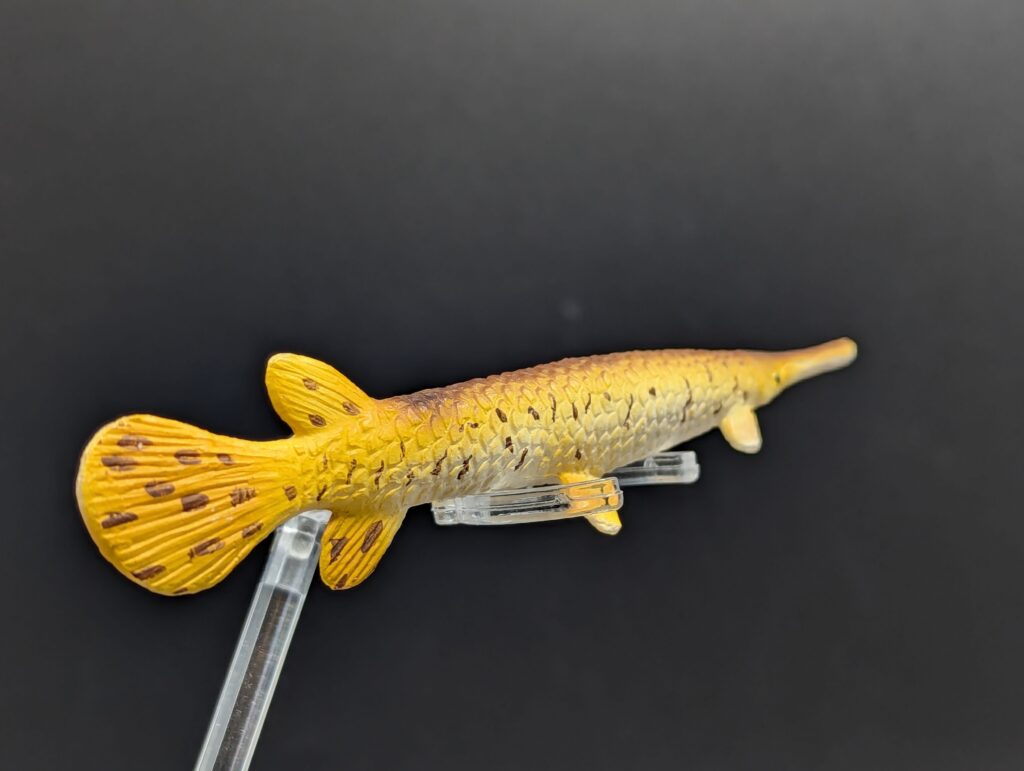
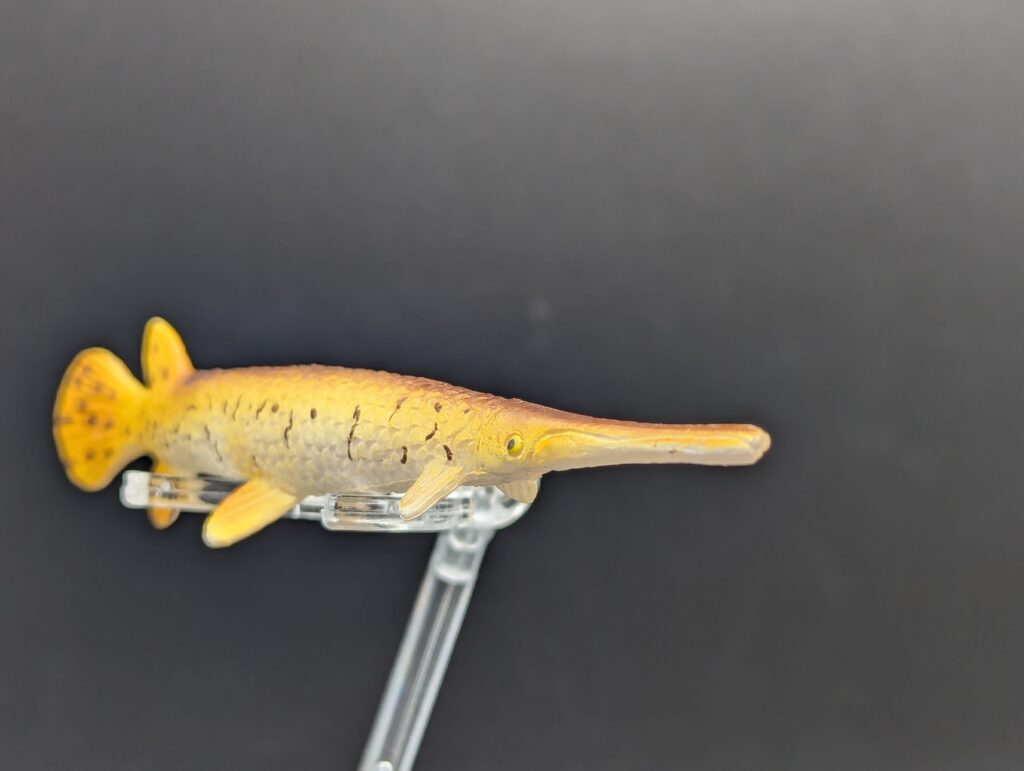
Traditionally longnose gar were caught as food, and while still popular in some areas, they are more popular as sportfish now. Adult longnose gar can reach up to 200cm (over 6 feet) leaving them among the top predators in their environment. Other than humans, alligators are their main predator. As juveniles…well, as expected, anything big enough will eat them (and juvenile gar are very goofy looking)–but their eggs are safe from birds, mammals and even some invertebrates due to being quite toxic to them (but apparently not to other fish or some reptiles…that seems very specific).
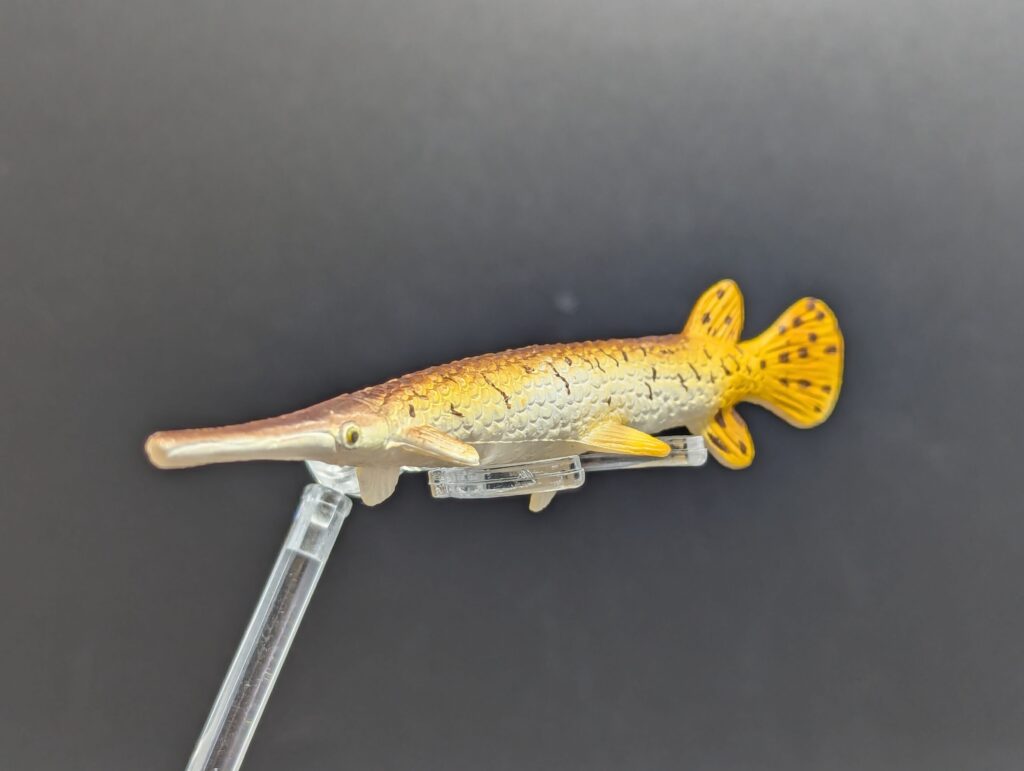
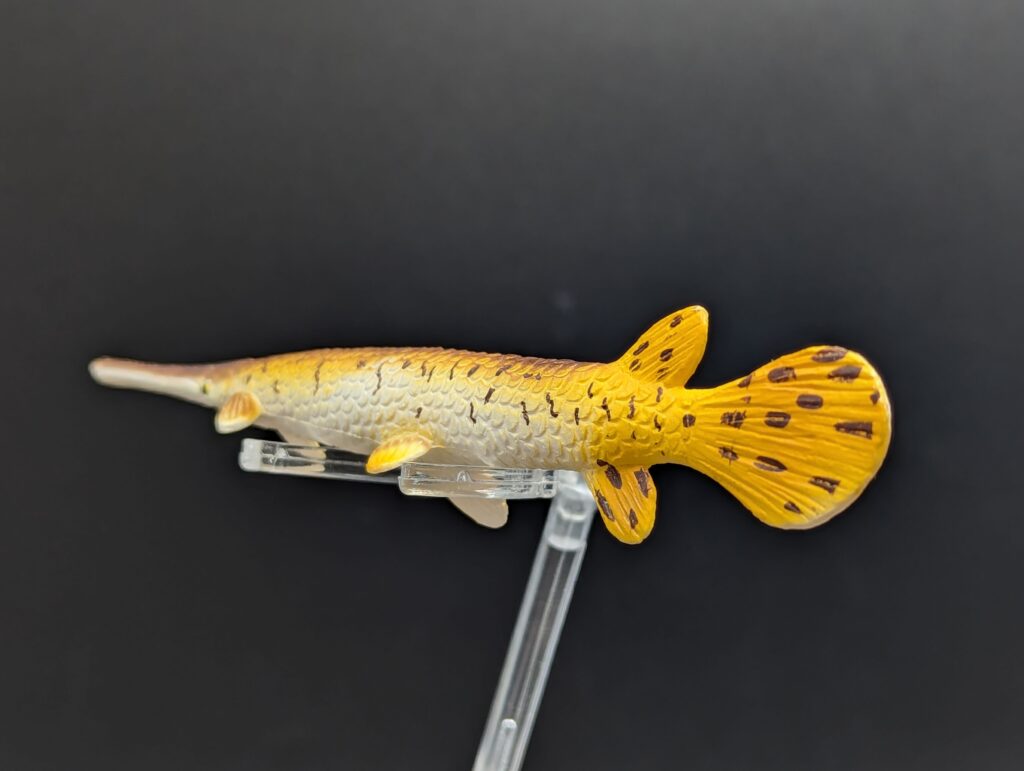
The figure itself is quite long and skinny, in keeping with the overall shape of a longnose gar. I frequently mention that Replica Toy Fish models are ramrod straight, limiting their ‘lifelike’ poses, but for fish like gars, it’s pretty much the norm–other than the swing of the head for prey, they kind of bob along in a straight line. So, very realistic. This is also gives the longnose gar the appearance of being, well, long, but it is the same length as the rest of the 6″ figures, 14cm or 5.5 inches (so, no, none of the ‘six inch line’ are 6 inches long). Assuming a big female at 200cm, we’d have a scale of 1:15. For a more average 120cm individual, it would be more like 1:9. The body is sculpted throughout with heavy, overlapping scales, although these should look more like they’re interlocking diamonds (that’s literally how ganoid scales work). At a glance, though, it does look okay, much heavier than that seen on the 6″ pike and 6″ tiger muskie.
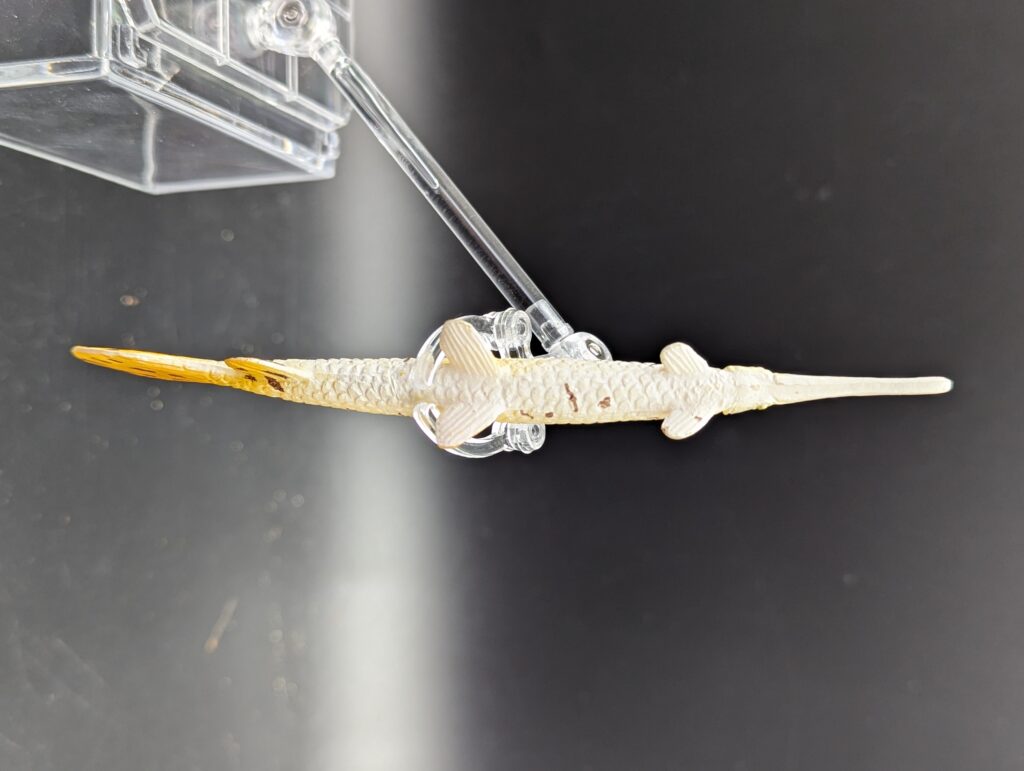
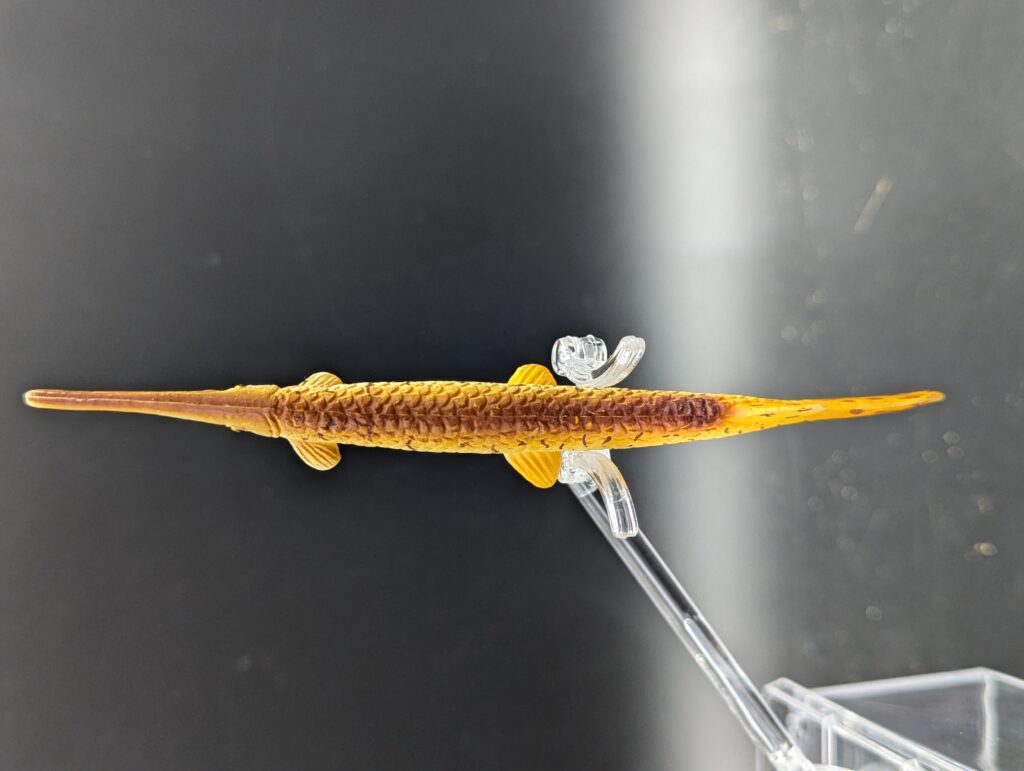
The fins are all sculpted as extended from the body, which looks good. The paired fins appear to be attached along the whole margin, which is incorrect. There should be a smaller attachment point from which the fins fan out, but this is a reasonable adjustment for toy models; a fin with a thin base would likely snap off. At least, it might. I have a lot of gar figures and some do it better than others. Overall shape and positioning looks good. The opercula are sculpted as large plates, but the head is otherwise smooth and tapers rapidly. The mouth is of course closed and very long, but the line between the upper and lower jaw is clearly marked. This make it possible to see that the upper jaw is extended just a little past the lower, ending in a bulbous tip. The eyes are large and set low on the head, maybe a bit too low but roughly midline. Nostrils are not present at the tip of the snout. The sculpt on the eye itself bulges a little, surrounded by a ring, but the paint does not match that.
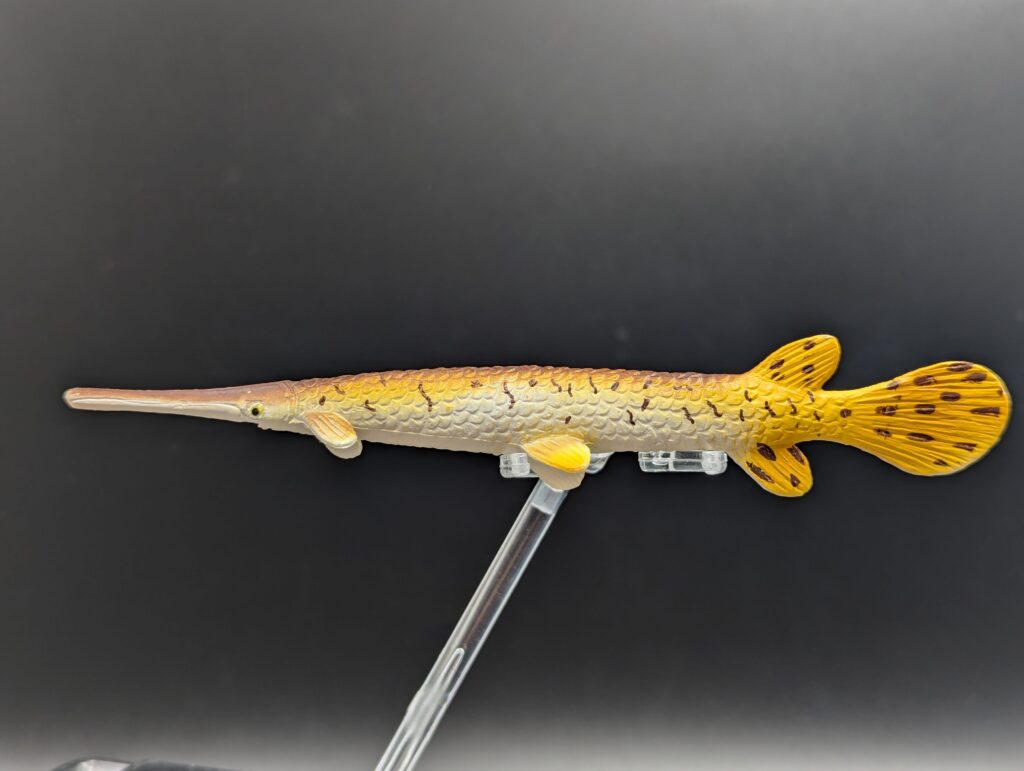
The paint choice is…simplistic. Longnose gars can be quite variable, but generally have a brown, greenish, bluish, or gold back and sides fading to light belly; the white of the belly can reach up quite high. On top of the base colour is often a pattern of black or brown spots, dashes, and bars, varying along the length of the body, often heavier towards the tail. But sometimes not. This figure has been left as primarily white on the belly and sides, with the back brown and fading to yellow at the edge. The markings consist of a few brown squiggles and dots, some reaching down to the belly. There are some longnose gar that are very lightly marked, and some that are more white than other colours, but the choice on this model just seems too dark or too light, and doesn’t capture that ‘longnose gar’ pattern.
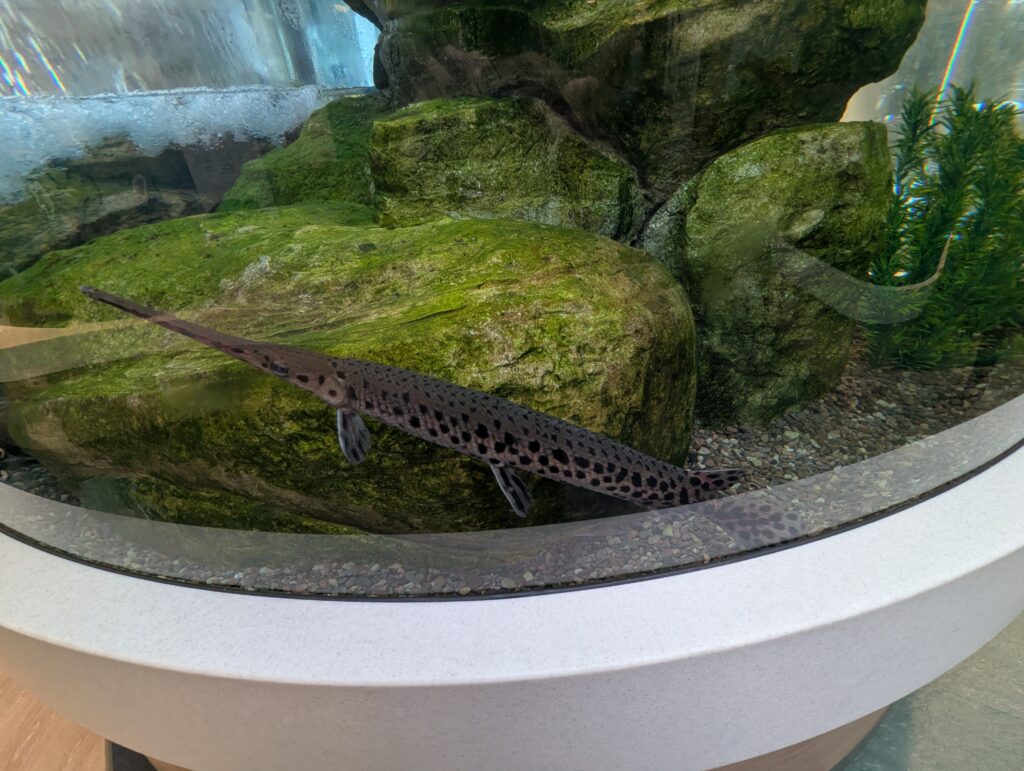
The fins do a better job in some ways. As is appropriate, the tail, dorsal and anal fins all have dark brown spots and dashes on them; these markings should have been used throughout the fish. The fins are all colours in the same yellow ochre colour; most images (like above) show the fins as otherwise colourless, but they can appear yellow, orange or red, so it might be based on the reference material. This won’t be the last time I point out that these figures can be inconsistent in their colour choices or paint application. As can be seen in the very first photo, I have two pictured and they are painted differently–in one, the brown extends along the back to the end of the snout and wraps around, in the other it does not. Then again…they retailed for like $4CDN. So really, it was an amazing bargain to get some cool fish toys! That said, there is educational value in getting the paint at least a bit closer. If they weren’t so rare now, it might be worth trying to paint one up differently (I am fortunate to still have a couple).
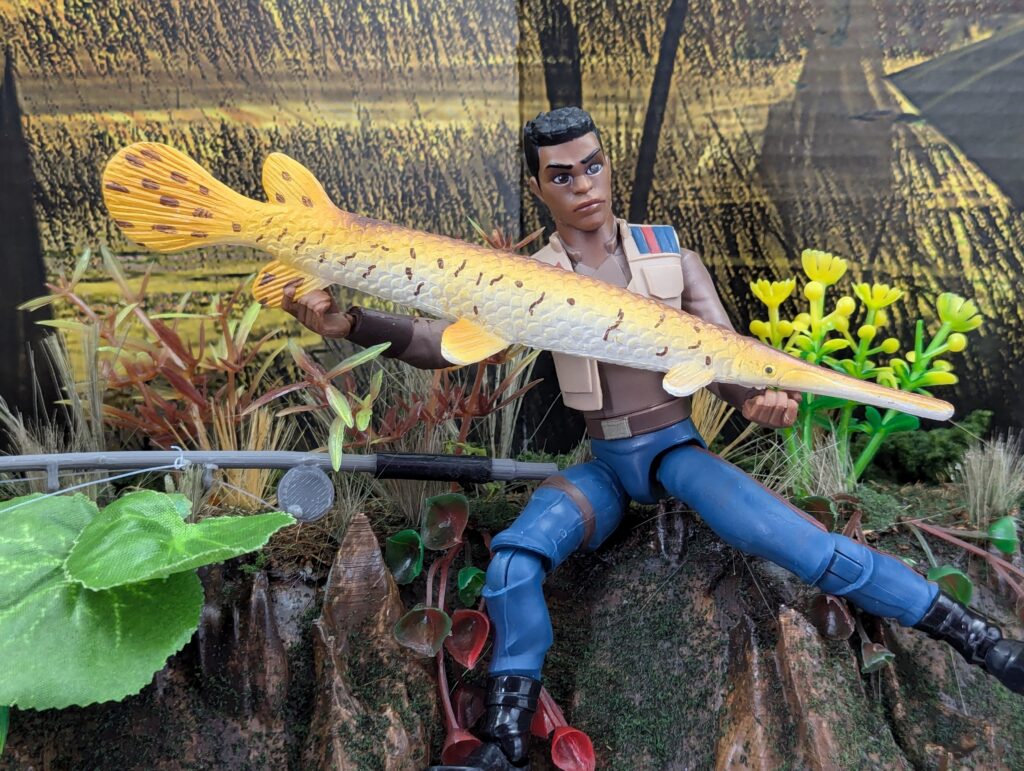
I may have sounded like I’m ending on a down note, but I really do appreciate this figure. For one, it’s nice to see a once-widely available model of a gar that isn’t an alligator gar (although those are still great), and the sculpt is very good. I still maintain that this larger size also works better for some of these species like gars and the big catfish, and it would have been nice if RTF would have stuck with them more (the loss of the paddlefish and bowfin…of which I saw test models…will haunt me). It is too bad that I can’t encourage people to go out and get these, but I can encourage people to support the companies that do make some of the less common animals (it’s a really nice Florida gar in the Everglades toob, just saying). Hopefully someone will pick up on this type of figure again. And the other ones…there are still two 6 inch figures to go!
Disclaimer: links to Ebay and Amazon on the AnimalToyBlog are affiliate links, so we make a small commission if you use them. Thanks for supporting us!



